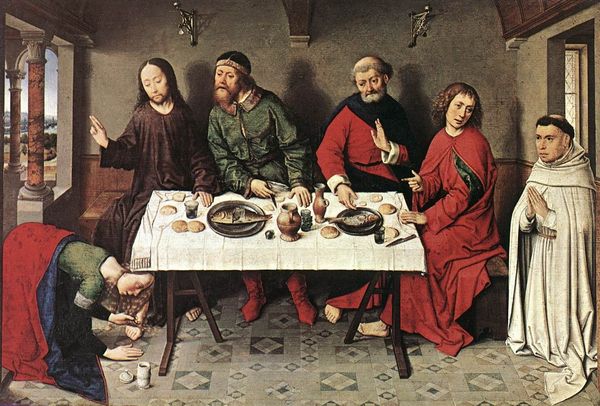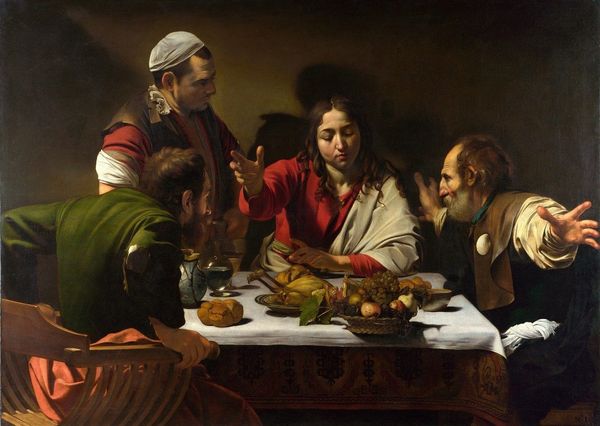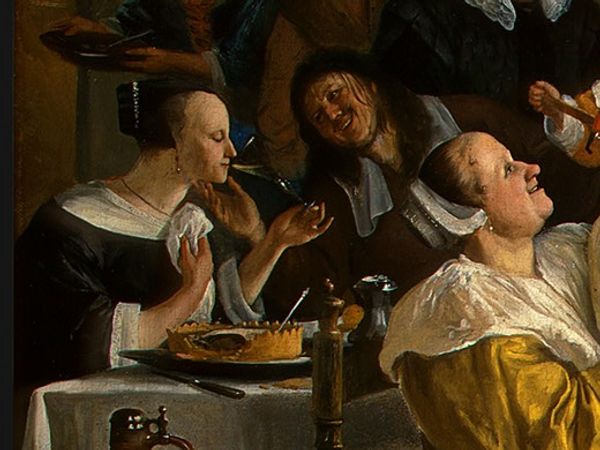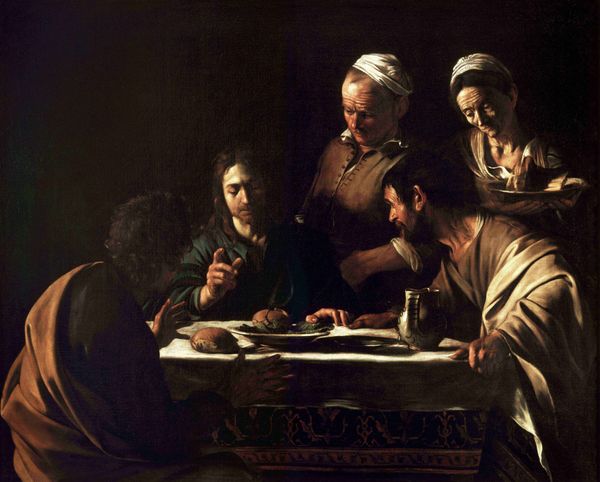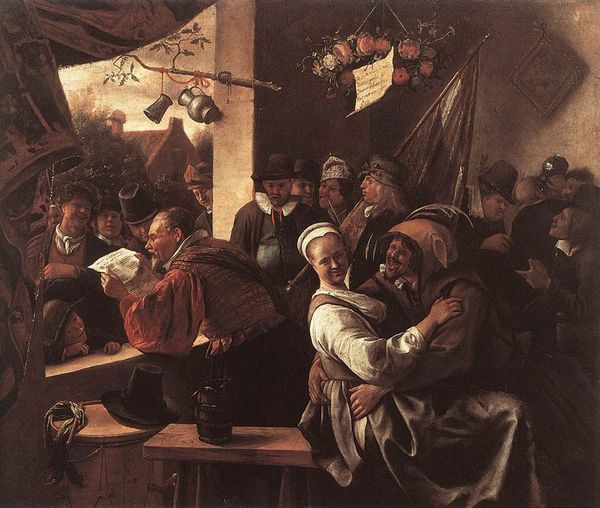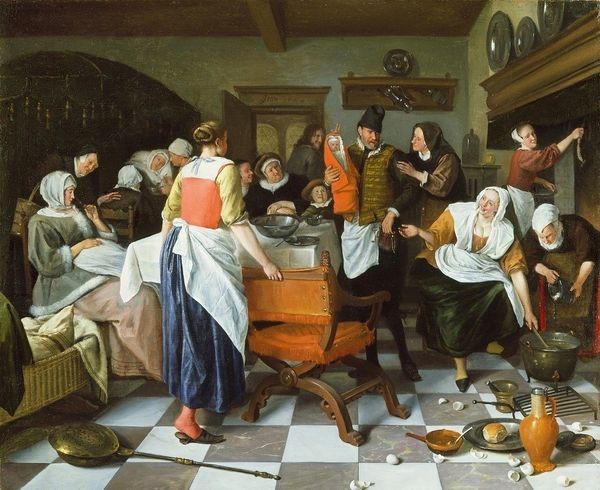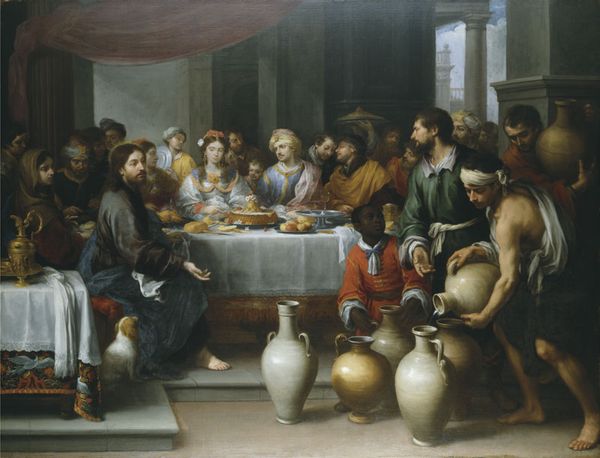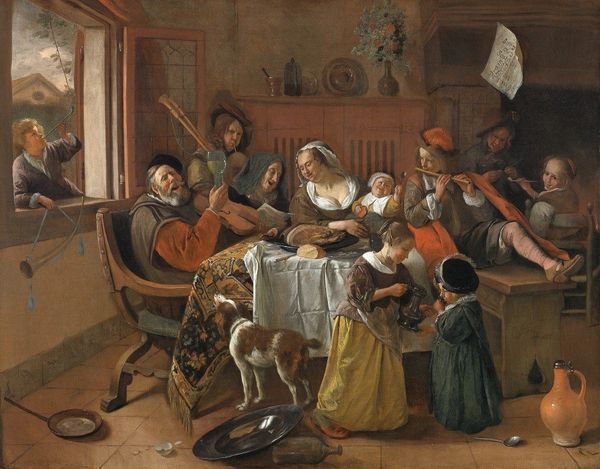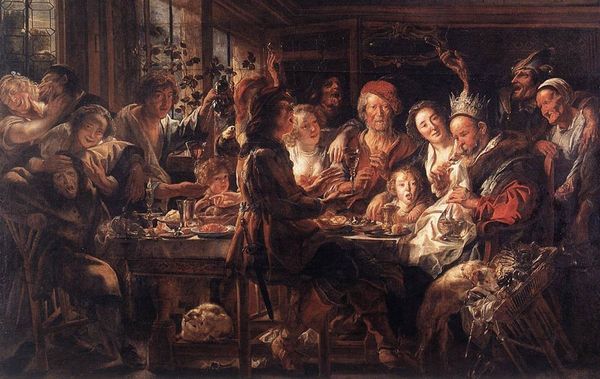
oil-paint
#
food
#
baroque
#
oil-paint
#
oil painting
#
vanitas
#
genre-painting
Copyright: Public domain
Editor: This is Osias Beert’s "Still Life of Fruit" from 1610, painted in oil. What strikes me is its quiet, almost contemplative mood. All of that delicious food...suspended in time. What do you see in this piece? Curator: I see a fascinating blend of the sumptuous and the symbolic. The overflowing platters suggest abundance, a celebration of worldly pleasures, yes. But it's important to consider the era and its fascination with *vanitas*. Notice the dragonfly, that tiny transient lifeform. Editor: Ah, I see it now! Down there near the front edge... so, this isn't *just* about beautiful fruit? Curator: Indeed. The imagery encourages us to delve deeper. Each object whispers of mortality. That peeled fruit, for instance, exposing its vulnerability. Consider the role of fruit throughout history. Editor: You mean like, the Garden of Eden? The ideas of temptation, and the fleeting nature of pleasure? Curator: Precisely. The glasses of wine might symbolize communion, but they’re also symbols of earthly indulgence, fleeting and ephemeral. Everything present is temporary. Beert asks us, what lasting value do these material things truly hold? Editor: So it’s less a straightforward depiction of fruit, and more a meditation on life and death... Curator: Yes, consider it a visual poem about our relationship with time, pleasure, and the inevitable end. And notice how dark the background is, always encroaching. Does this darkness serve to enhance and define the bright and colourful presentation of food? Editor: That interplay between light and darkness really reinforces that message. I'll never look at a still life the same way again! Curator: Good! Art's power lies in its ability to make us see beyond the surface, to contemplate the symbols woven into our cultural tapestry.
Comments
No comments
Be the first to comment and join the conversation on the ultimate creative platform.

